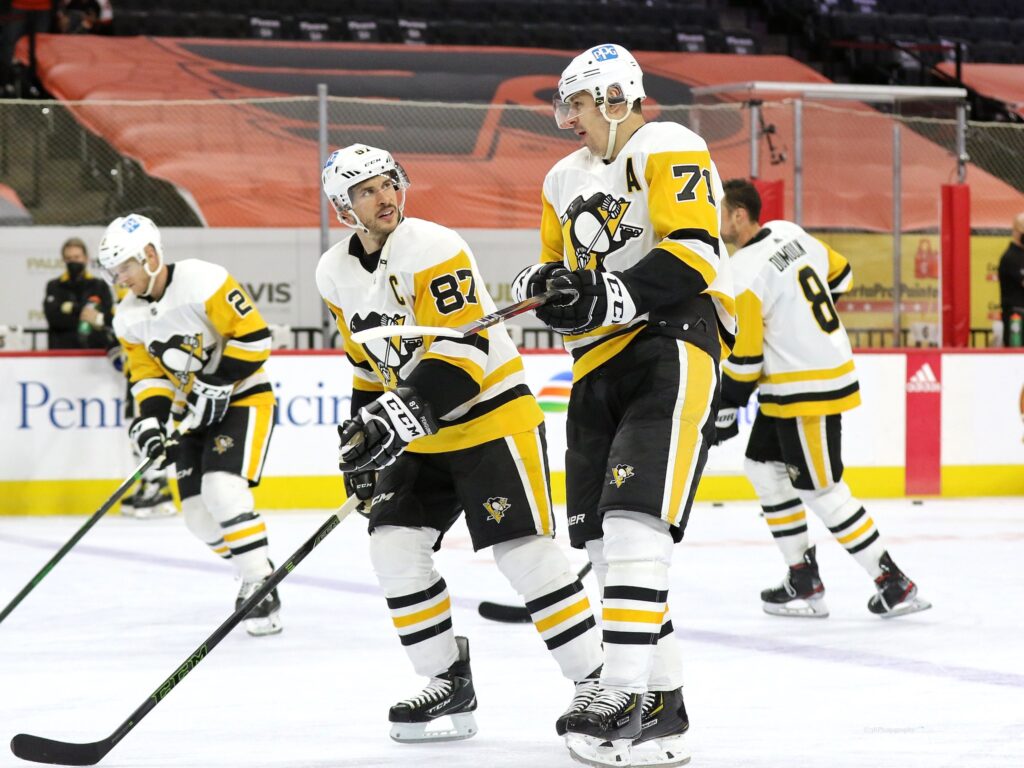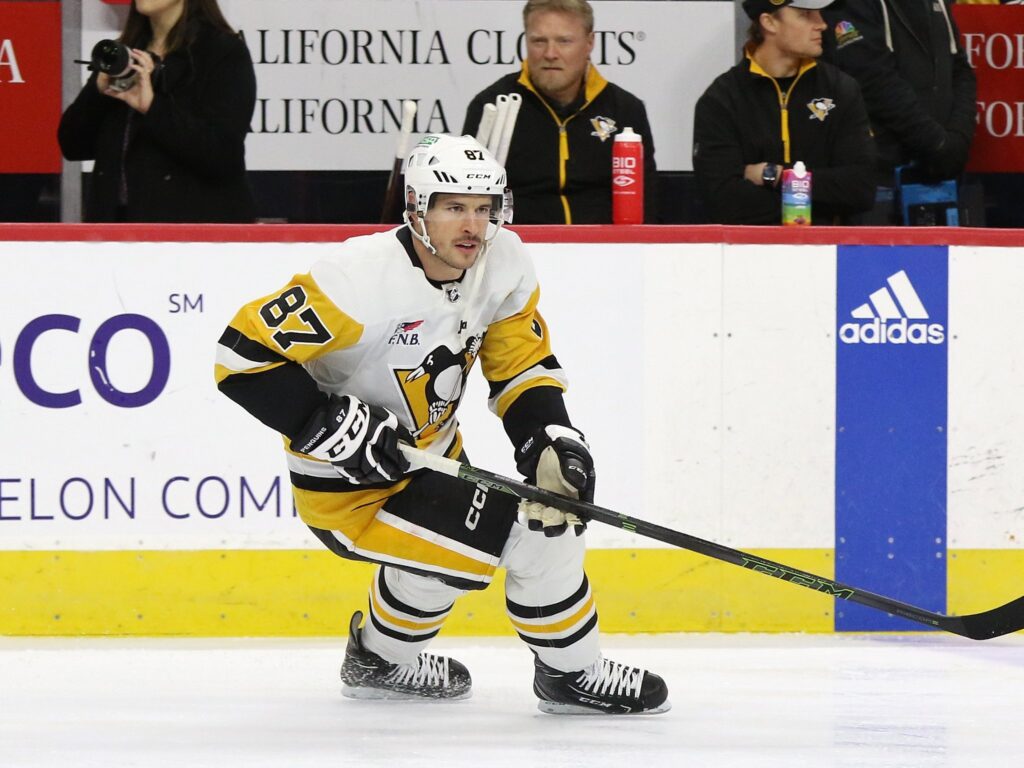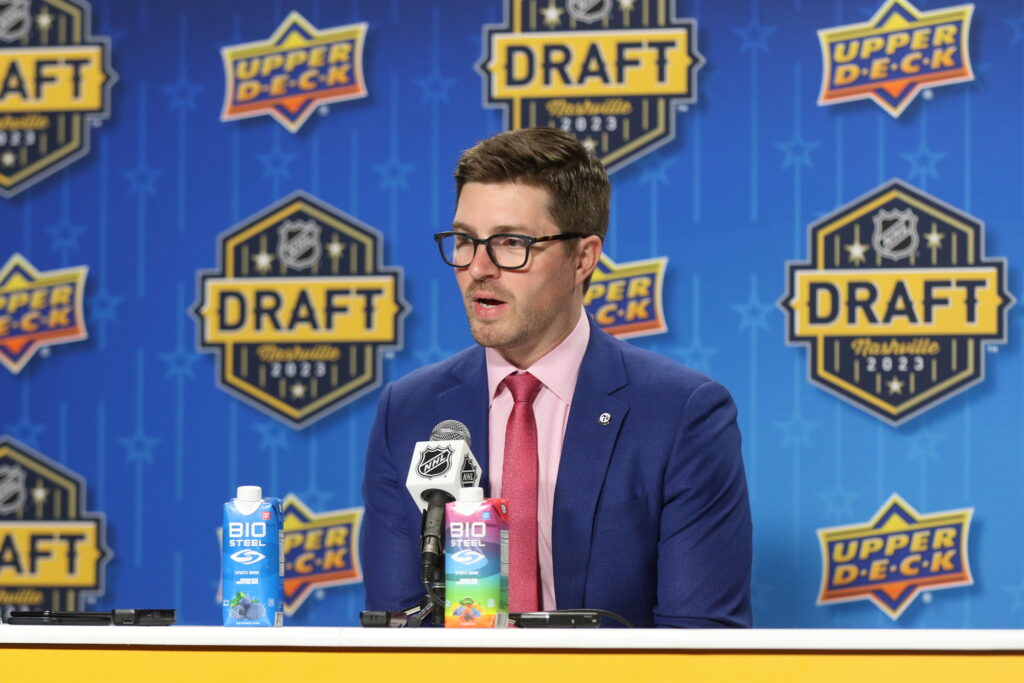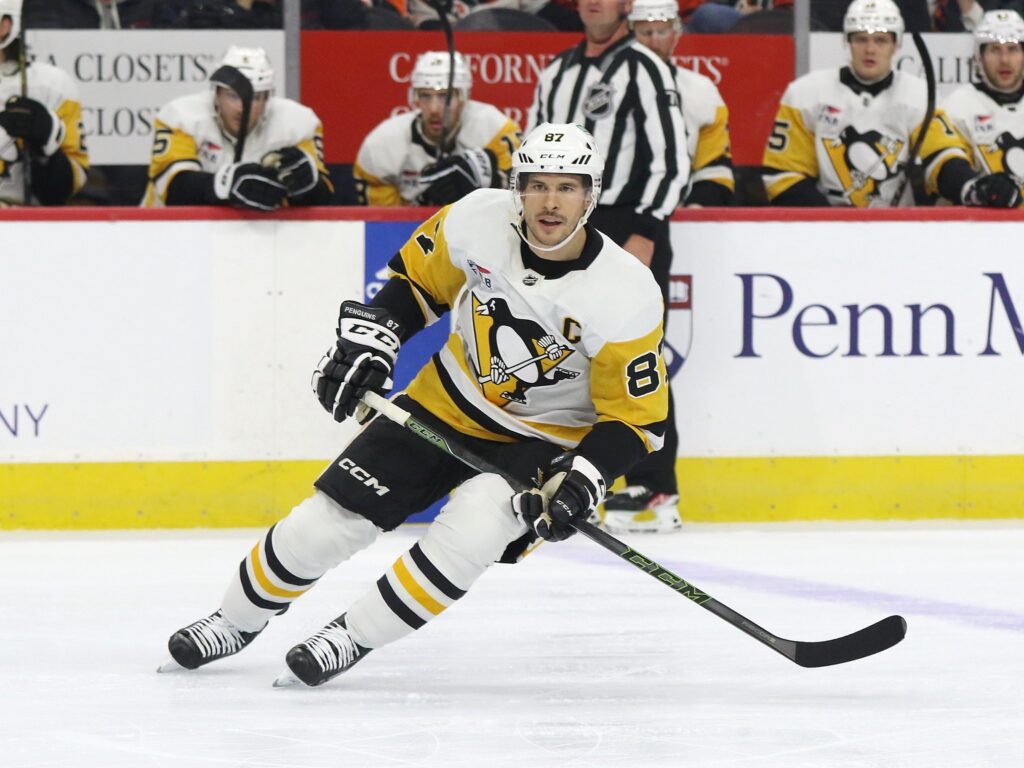For two decades, the idea was pure sacrilege. It was the hockey equivalent of suggesting the sky is green or that a hot dog is a sandwich—a debate-starter so absurd it was hardly worth entertaining. Sidney Crosby, wearing anything but the black and gold of the Pittsburgh Penguins, was a fantasy reserved for video games and the most delusional corners of rival fanbases. He was their Mario Lemieux, their franchise messiah, destined to begin and end his storied career in the Steel City.
But the unthinkable is now thinkable. The whispers have become a steady hum, and the hum is amplifying into a roar.
Also on the EDGE – Kaprizov Reportedly Turned Down a Huge Contract Extension From the Wild…What Does It All Mean?
As the NHL gears up for the 2025-26 season, the Penguins find themselves in an unfamiliar and deeply uncomfortable position: on the outside looking in. For three consecutive years, the Stanley Cup Playoffs have gone on without them. Since their last trip to the Eastern Conference Final in 2018, they haven’t won a single playoff round. For a franchise defined by its modern dynasty, this isn’t a slump; it’s a slow-motion identity crisis.
And at the center of it all stands captain Sidney Crosby. At 38 years old, he is not gracefully fading into the twilight. He is raging against it. Fresh off a 91-point campaign and a dominant, title-winning performance as the captain of Team Canada at the 4 Nations Face-Off, Crosby remains a bona fide superstar. His individual brilliance is as sharp as ever, which only serves to cast the Penguins’ collective failures in a harsher light.

This juxtaposition—an elite player desperate for championships trapped on a team trending towards a rebuild—has created the perfect storm of speculation. The question is no longer if Crosby will retire a Penguin, but should he? And for the first time, the answer coming from his own camp is no longer a foregone conclusion.
The Brady Blueprint
For years, any talk of Crosby leaving Pittsburgh was immediately and unequivocally shot down. But the language is changing. The most seismic shift came from the man who knows Crosby’s career path best: his agent, the powerful Pat Brisson.
In a move that sent shockwaves through the hockey world, Brisson openly acknowledged that a trade is “always a possibility.” He didn’t stop there. He invoked the name that has become the gold standard for late-career, legacy-defining moves: Tom Brady.
“If the rebuild doesn’t progress well and the losing continues,” Brisson posited, Crosby might have to consider his options. The comparison is both deliberate and devastatingly effective. After 20 years and a fistful of rings with the New England Patriots, Brady bolted for the Tampa Bay Buccaneers and immediately won another Super Bowl. He didn’t tarnish his legacy; he burnished it, proving he was the system, not a product of it.
Brisson’s calculated comment was not a threat, but an opening of a door that was long assumed to be bolted shut. It reframes a potential departure not as an act of betrayal, but as a final, noble quest for glory—a last ride for a champion who refuses to accept mediocrity. It gives Crosby, and the Penguins, an out. It provides a blueprint for how a franchise icon can leave the nest without burning it down on his way out.
Also on the EDGE – Canucks’ Ticking Time Bomb: The Quinn Hughes Contract
Reading Between the Lines
Crosby, ever the consummate professional, isn’t about to demand a trade from the podium. His focus, as he always insists, is on the next game, on giving his all for the team whose jersey he wears. But even Sid can’t completely mask the frustration of a born winner who is being forced to watch the big dance from the sidelines.

Talking to a small group of reporters this week at the NHL/NHLPA media tour, Crosby said he “understands” the speculation, acknowledging the “chatter” as “the hard part about losing.” He’s made his personal ambition crystal clear, stating his desire to win “another Cup or two” and that he “should be playing playoff hockey every year.”
Perhaps his most telling comment, however, was a subtle admission about how he views the rumors. “To know that a team like that wants you, it’s not the end of the world,” Crosby mused on speculation that Montreal or Colorado might be interested. “It could be worse.”
That is not the response of a man shutting down speculation. It’s the response of a man who recognizes his own value and understands that being a coveted asset is a powerful position to be in. While he remains committed to Pittsburgh for now, the subtext is clear: his patience is not infinite. The desire to hoist Lord Stanley’s mug one more time burns brighter than his allegiance to one city, especially if that city can no longer provide a realistic path to the parade route.
The General Manager’s Paradox
Caught in the middle of this high-stakes drama is Penguins General Manager Kyle Dubas. Publicly, his stance is what you’d expect. His focus is on returning the team to “perennial contender status as urgently as possible,” and he has “no control over speculation.”
Privately, he faces a monumental paradox. The very presence of Sidney Crosby, the engine that drives ticket sales and keeps the team relevant, is also the biggest obstacle to a proper, full-scale rebuild. Crosby’s greatness single-handedly keeps the Penguins in the mushy middle—too good to secure the kind of high-end draft lottery pick that can truly reshape a franchise, but not good enough to actually contend.

Dubas is trying to thread an impossible needle: get younger and build for the future while simultaneously keeping his aging core competitive enough to satisfy number 87. It’s a strategy that rarely works. Furthermore, with potential new ownership on the horizon, the pressure to keep the face of the franchise happy—and in the building—is immense. Trading Crosby would be a cataclysmic business decision, even if it might be the correct hockey one for the long-term health of the organization.
This tension between the sentimental and the strategic, the business and the on-ice product, is at the heart of the Penguins’ dilemma. As long as Crosby is there, they can’t fully tear it down. But if they can’t tear it down, can they ever truly build it back up in time for him?
Also on the EDGE – The Razor’s Edge: Inside Connor McDavid’s Calculated Contract Standoff
The Dream Destinations and The Final Countdown
If the unthinkable were to happen, where would he go? The hockey world has already settled on two primary “dream landing spots,” each with its own compelling narrative.
The first is the Colorado Avalanche. The hockey romance writes itself. Crosby would join his closest friend and fellow Cole Harbour, Nova Scotia native, Nathan MacKinnon. The two prodigies, who train together every offseason, uniting for a championship run would be a Hollywood script come to life. The Avalanche are a perennial contender with the star power and structure to make an immediate push for the Cup.
The second, more sentimental option, is the Montreal Canadiens. Crosby grew up a die-hard Habs fan. The chance to don the bleu, blanc, et rouge and play out his final chapter in the mecca of hockey would be a powerful narrative arc. The thunderous ovation he received as Canada’s captain during the 4 Nations Face-Off in Montreal was a palpable reminder of the city’s reverence for him.
Of course, this is all just talk until Crosby himself decides to act. With a full no-move clause in his contract, which runs through the 2026-27 season, he holds all the cards. He will not be traded unless he wants to be, and he will dictate the destination.
All eyes are now on the summer of 2026. At that point, Crosby will be entering the final year of his deal. The Penguins’ trajectory under Dubas will be much clearer. If they are still spinning their wheels outside the playoff picture, that is the moment when the “real question,” as Brisson put it, will be asked.
For now, Crosby remains a Penguin. But the foundation is cracking. The era of certainty is over, replaced by a tense and fascinating waiting game. Will he follow the path of Lemieux and Steve Yzerman, a one-team legend to the very end? Or will he follow the Brady blueprint, chasing one last ring in a new uniform, forever changing how we view his legacy? The noise is only going to get louder.
Created with the aid of Gemini AI
